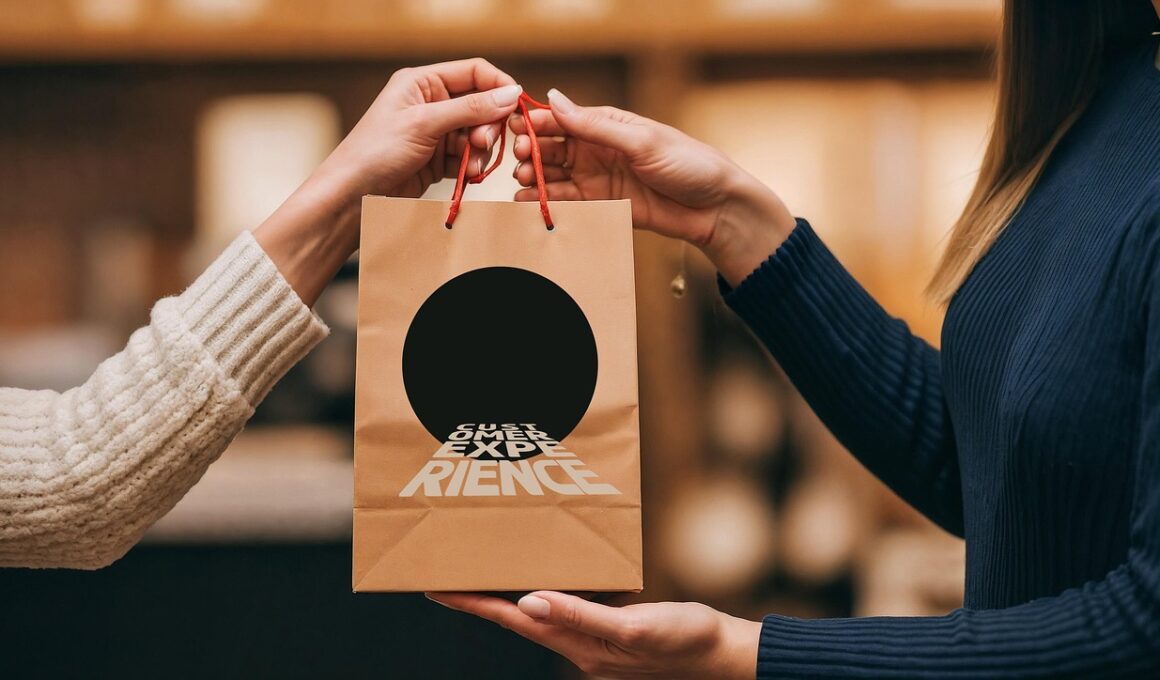Customizing Packaging to Target Specific Market Segments
In today’s competitive marketplace, customizing product packaging plays a crucial role in attracting specific market segments. Brands can significantly enhance customer appeal by tailoring their packaging designs to the preferences and values of their target audience. This approach may involve integrating vibrant colors and innovative designs that resonate with specific demographics. For instance, a premium product aimed at millennials may feature sleek, modern packaging with eco-friendly materials, which aligns with their values. In contrast, packaging designed for elderly consumers might use larger fonts and clear labels for easy readability. Clear messaging is just as important, as it helps convey the brand’s story and values effectively. This tactic increases brand loyalty and customer engagement, fostering positive brand recognition. Additionally, understanding the cultural nuances of each target group can contribute to more effective packaging strategies. This enables companies to resonate with different segments at a more personal level. Comprehensive market research and consumer analysis are vital in identifying these preferences and designing packaging that speaks directly to the intended audience.
Another vital aspect to consider in customizing packaging is the importance of practicality. Consumers increasingly value convenience, and packaging that enhances usability can significantly improve customer satisfaction. For example, products aimed at busy professionals may benefit from easy-to-open packages that allow for quick access and usage. Integrated features like resealable bags or pump dispensers can appeal to this segment, as they offer versatility and ease of storage. Companies can also enhance their product’s status by ensuring that the packaging is visually appealing while remaining highly functional. Additionally, brands should focus on the sustainability of their packaging materials to attract environmentally conscious consumers. Consumers today are more likely to support companies that prioritize eco-friendly initiatives. Using recyclable, biodegradable, or reusable materials can significantly elevate a brand’s image and appeal. Effective use of textures and finishes can create a tactile experience for consumers, enhancing their emotional connection with the product. Furthermore, incorporating visible branding on the packaging reinforces recognition and brand recall, encouraging repeat purchases and long-term loyalty.
Emphasizing Brand Identity Through Packaging
Custom packaging serves as an extension of a brand’s identity, making it essential to maintain consistency across all products. Elements such as colors, fonts, and logos should harmonize to establish a coherent brand image. When a customer’s perception of a brand aligns with its packaged product, trust and loyalty develop. Moreover, brands should utilize storytelling techniques in their packaging design to connect with customers on a deeper emotional level. This might include using messaging that reflects the brand’s history or core values, thus inspiring a connection beyond mere purchases. For example, a company committed to sustainable practices can clearly communicate this through its packaging materials and design. Interactive packaging, such as QR codes leading to online content, can also enhance customer experience and engagement. Brands can utilize this method to promote their values or provide educational material about the product’s origins. Furthermore, it is essential to stay updated on design trends since consumer preferences continuously evolve. This ongoing commitment to adapting packaging strategies keeps brands relevant and appealing to their target audiences.
Additionally, packaging must be designed with the distribution and retail environment in mind. Consideration should be given to how products will be displayed, stored, and transported. Efficiently designed packaging can contribute to reduced shipping costs and improved shelf space utilization, essential factors in gaining a competitive edge. For instance, manufacturers can create stackable boxes that maximize storage space while ensuring that the contents remain undamaged during transport. Retailers also appreciate packaging that facilitates eye-catching displays in stores. Cleverly designed designs can attract customers’ attention and encourage impulse buying. Consequently, investing in quality packaging can lead to better in-store performance and higher sales. Furthermore, incorporating security features like tamper-evident seals can enhance consumer trust by assuring them of a product’s safety. These enhancements demonstrate the brand’s commitment to quality and customer satisfaction, resulting in increased brand loyalty. It is also increasingly important to ensure compliance with regulations regarding packaging in different countries, as failing to comply can lead to additional costs and potentially harm a brand’s reputation.
Leveraging Influencer Collaborations for Packaging Solutions
In recent years, influencer marketing has emerged as a powerful tool for promotions and branding. Collaborating with influencers when designing product packaging can yield significant insights into what appeals to target demographics. Influencers have their finger on the pulse of customer preferences and can provide feedback on potential packaging designs. Their involvement can also elevate a product’s marketability by associating it with their personal brand and followers. A successful partnership can lead to tailored packaging that resonates with customers on a personal level. For example, an influencer might recommend a unique design that taps into current trends, thus attracting a wider audience. This collaborative process can be mutually beneficial, as it enhances the influencer’s relevance and ties their brand identity closer to the product. Additionally, featuring the influencer’s branding alongside the product packaging can raise brand awareness among their audience, leading to increased sales. Companies should be mindful, however, to choose influencers whose values align with their brand to maintain authenticity. Proper evaluation, planning, and execution of these partnerships can result in exceptional packaging designed to capture specific market segments.
Market segmentation is crucial in influencing the effectiveness of customized packaging. Understanding the distinct needs of each segment allows brands to optimize their approach. Segmented market research can reveal unique preferences regarding color schemes, shapes, and overall packaging styles that appeal to different groups. For instance, younger consumers may favor vibrant, eye-catching packaging, while older adults might prefer simpler, more functional designs. Brands can utilize demographic data, psychographics, and consumer behavior studies to tailor their packaging strategies. Aligning packaging strategies with identified market segments can also serve to increase perceived value. Customized packaging that conveys a sense of exclusivity can attract higher-end customers. Companies need to think beyond standard designs and instead create packaging that tells a story, serving not just as protection but as branding. Leveraging this aspect of packaging can enhance the overall customer experience and convey a sense of quality. Ultimately, the goal is to make sure that the packaging truly resonates with the intended audience. When done successfully, customized packaging can drive consumer interest and, ultimately, boost sales across various market segments.
Conclusion: The Future of Custom Packaging
As consumer preferences continue to evolve, brands need to stay on the cutting edge of packaging innovation. The future of customized packaging lies in its ability to adapt to trends while remaining aligned with target market segments. Technologies such as 3D printing and smart packaging are set to transform how brands approach customization and engagement. Brands can expect these advancements to enable more innovative designs while streamlining processes and reducing costs. Staying attuned to changes in consumer habits is paramount as younger generations prioritize unique, memorable experiences. By understanding these dynamics, brands can create packaging solutions that resonate with new expectations. Moreover, implementing feedback mechanisms to gather customer insights will facilitate continuous improvement in packaging efforts. Brands should also be aware of regulatory trends influencing packaging, particularly concerning sustainability. Companies that embrace environmental responsibility can differentiate themselves in saturated markets, as consumers increasingly expect brands to consider their ecological footprint. Ultimately, the goal of customized packaging remains the same: to create meaningful connections with customers. As brands reflect on the importance of customization, they should strive to balance innovation with core brand values to ensure lasting customer loyalty.


